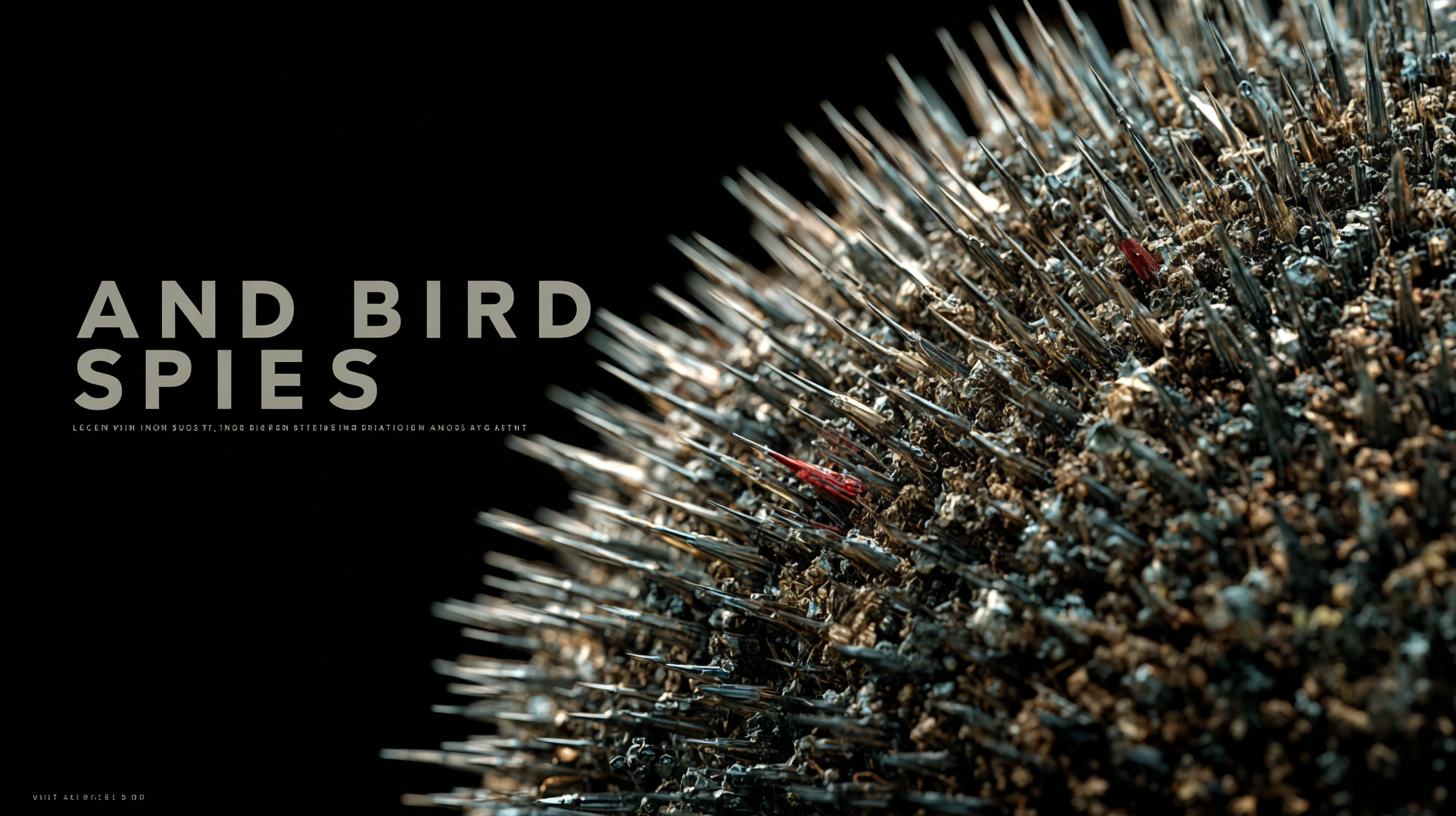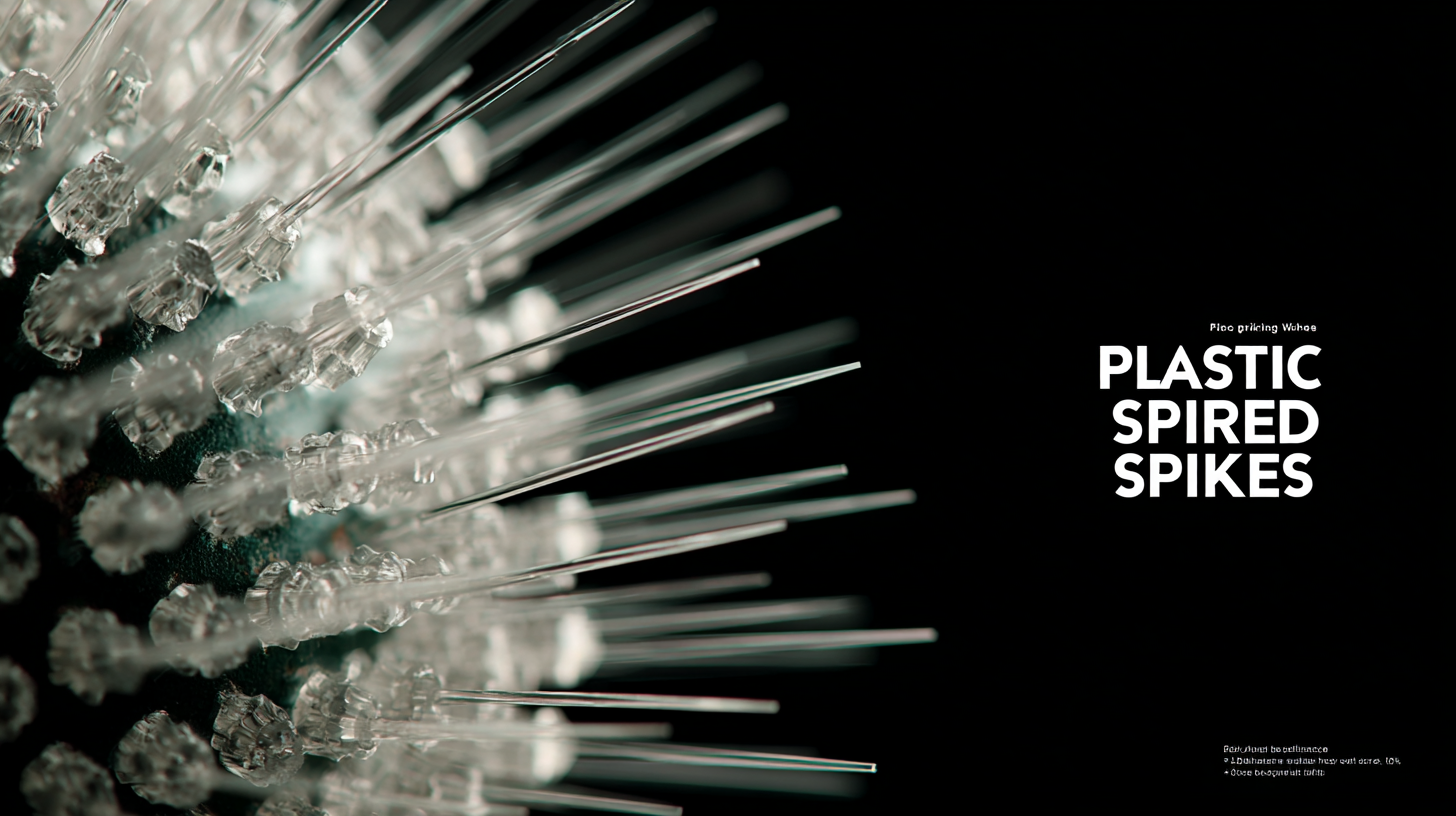
 Bird & Pigeon Pest Control
Bird & Pigeon Pest Control  Mice & Rat Pest Control
Mice & Rat Pest Control  Mole & Vole & Gopher Pest Control
Mole & Vole & Gopher Pest Control  Fly Insect Pest Control
Fly Insect Pest Control  Wasp & Bee Pest Control
Wasp & Bee Pest Control  Moth Pest Control
Moth Pest Control  Mosquito Pest Control
Mosquito Pest Control  Cockroach Pest Control
Cockroach Pest Control  Wildlife Pest Control
Wildlife Pest Control  Snake Pest Control
Snake Pest Control  Bed Bug & Flea Pest Control
Bed Bug & Flea Pest Control  Snail & Slug Pest Control
Snail & Slug Pest Control  Ant & Termites Pest Control
Ant & Termites Pest Control  Spider Pest Control
Spider Pest Control  Other Insect Pest Control
Other Insect Pest Control  Garden Products
Garden Products  Blog
Blog In the quest for innovative solutions to deter pests and protect properties from unwanted birds, Plastic Anti Bird Spikes emerge as a practical and effective option. These spikes are designed to prevent birds from landing or roosting on various surfaces, thereby minimizing the mess and potential damage associated with bird activity. Their unique features, such as lightweight construction, adaptability to different environments, and ease of installation, make them a popular choice among homeowners and business owners alike. In this blog, we will explore the various applications of Plastic Anti Bird Spikes, showcasing real-world examples where they have proved invaluable in maintaining the integrity of buildings and public spaces while offering humane solutions to address bird-related issues. Join us as we delve into the functionality and advantages of this remarkable product, providing insight into why it stands out in the market today.

As urban populations continue to grow, cities face challenges related to pest birds, which can lead to significant damage to property and infrastructure. According to a report by the National Pest Management Association, buildings in urban settings can incur costs upwards of
$100,000 annually due to bird infestations, including sanitation issues and structural damage.
Plastic anti-bird spikes have emerged as a cost-effective solution with the added bonus of being lightweight, durable, and environmentally friendly. Their design effectively deters birds from landing on surfaces while minimizing the risk of injury.
In addition to reducing maintenance and repair costs associated with bird droppings, plastic anti-bird spikes can help enhance urban hygiene. The World Health Organization has indicated that bird droppings can carry diseases such as histoplasmosis and cryptococcosis, which pose health risks to city dwellers. By implementing plastic anti-bird spikes in critical areas, city planners can not only improve the aesthetic appeal of urban environments but also promote public health and safety. This dual benefit makes plastic anti-bird spikes a strategic investment for cities looking to combat the challenges posed by avian pests while maintaining economic viability.
When it comes to anti-bird solutions, maintenance costs can significantly influence the choice between plastic and metal spikes. Recent industry reports indicate that plastic anti-bird spikes offer a lower total cost of ownership due to their durability and weather resistance. According to a study by the Bird Control Group, plastic solutions can last up to 10 years without degradation, while metal spikes can show signs of rust or corrosion within just a few years, especially in harsh climates. This longevity means fewer replacements and reduced upkeep, making plastic spikes an economically viable option for long-term bird control.

Moreover, the installation and maintenance processes for plastic spikes are generally simpler and less labor-intensive. The materials are lightweight, reducing shipping costs and making handling easier during installation. A report by the International Bird Control Association found that metal spikes often require more maintenance checks and repairs, which can add up to 20% more in operational costs over five years compared to their plastic counterparts. As property owners and managers look to optimize resources, understanding these differences in maintenance costs will be crucial for making informed decisions regarding bird control solutions.
Anti-bird spikes are increasingly recognized as a vital tool in balancing urban development with bird population management and conservation efforts. By effectively deterring birds from roosting on buildings and other structures, these devices help minimize potential conflicts between wildlife and human environments. According to a report from the National Audubon Society, urban areas are often viewed as hostile environments for many bird species, leading to significant declines in their populations. The installation of plastic anti-bird spikes not only curtails unwanted nesting but also reduces the transmission of diseases commonly associated with bird droppings, thus contributing to healthier urban ecosystems.
The utilization of plastic anti-bird spikes is aligned with modern conservation strategies aimed at protecting vulnerable bird species. A study by the Migratory Bird Conservation Partnership highlights that urban habitats can be enhanced through measures that minimize bird collisions and predation. By employing anti-bird spikes, property owners can play a proactive role in sustaining bird populations while maintaining their structures. This synergy between architecture and conservation reflects a growing recognition that preserving biodiversity can coexist with urbanization, demonstrating the importance of innovative solutions like plastic anti-bird spikes in sustainable wildlife management practices.
 Plastic anti-bird spikes are rapidly gaining popularity due to their innovative designs that effectively deter birds while enhancing visual aesthetics. Unlike traditional metal spikes, plastic variants are lightweight and come in a variety of colors and styles, allowing them to blend seamlessly with various architectural designs. This versatility enables property owners to maintain the beauty of their structures without compromising on functionality. The unique designs often feature smooth edges and curved forms, which not only improve efficacy but also reduce the risk of injury to birds.
Plastic anti-bird spikes are rapidly gaining popularity due to their innovative designs that effectively deter birds while enhancing visual aesthetics. Unlike traditional metal spikes, plastic variants are lightweight and come in a variety of colors and styles, allowing them to blend seamlessly with various architectural designs. This versatility enables property owners to maintain the beauty of their structures without compromising on functionality. The unique designs often feature smooth edges and curved forms, which not only improve efficacy but also reduce the risk of injury to birds.
When considering the installation of plastic anti-bird spikes, it's essential to choose high-quality products that include UV protection to ensure longevity. Additionally, position the spikes in areas with high bird activity, such as rooftops and ledges, to maximize effectiveness. Regular maintenance checks are also advisable; clean the spikes occasionally to prevent debris buildup that can diminish their deterrent capabilities. By incorporating these tips, property owners can create a bird-free environment while maintaining an appealing exterior.
The evolution of materials and technologies in bird deterrence solutions has opened new avenues for more effective and sustainable management of avian populations in urban spaces. Recent advancements in plastic technologies have led to the development of anti-bird spikes that are not only more durable but also environmentally friendly. These modern spikes are designed using high-quality, UV-resistant plastics that can withstand harsh weather conditions while providing a long-lasting deterrent against birds. The lightweight nature of these materials ensures easy installation and maintenance, making them an attractive option for property owners.
Moreover, innovations in design and functionality are paving the way for smarter deterrence strategies. The incorporation of smart materials that can respond to environmental changes or bird behaviors enhances the effectiveness of these spikes. For instance, some designs now feature flexible components that adjust to different bird sizes and feeding habits, optimizing deterrence without harming wildlife. As cities continue to grow and bird populations adapt, these advancements represent a critical step towards creating harmonious coexistence between urban environments and nature.
| Feature | Description | Application Area | Material Type | Future Trend |
|---|---|---|---|---|
| Durability | Resistant to UV rays and weather conditions. | Urban buildings, rooftops. | High-density Polyethylene (HDPE) | Enhanced weather resistance additives. |
| Design | Flexible design suitable for various surfaces. | Balconies, ledges. | Polycarbonate | 3D printing for customized designs. |
| Effectiveness | Prevents birds from landing without causing harm. | Parks, gardens. | ABS plastic | Integration with smart technology for remote monitoring. |
| Eco-Friendliness | Made from recyclable materials. | Commercial buildings, restaurants. | Recycled plastic composites | Sustainable material sourcing practices. |
| Installation | Easy to install with minimal tools required. | Residential homes, fences. | Polypropylene | Modular systems for faster installation. |

